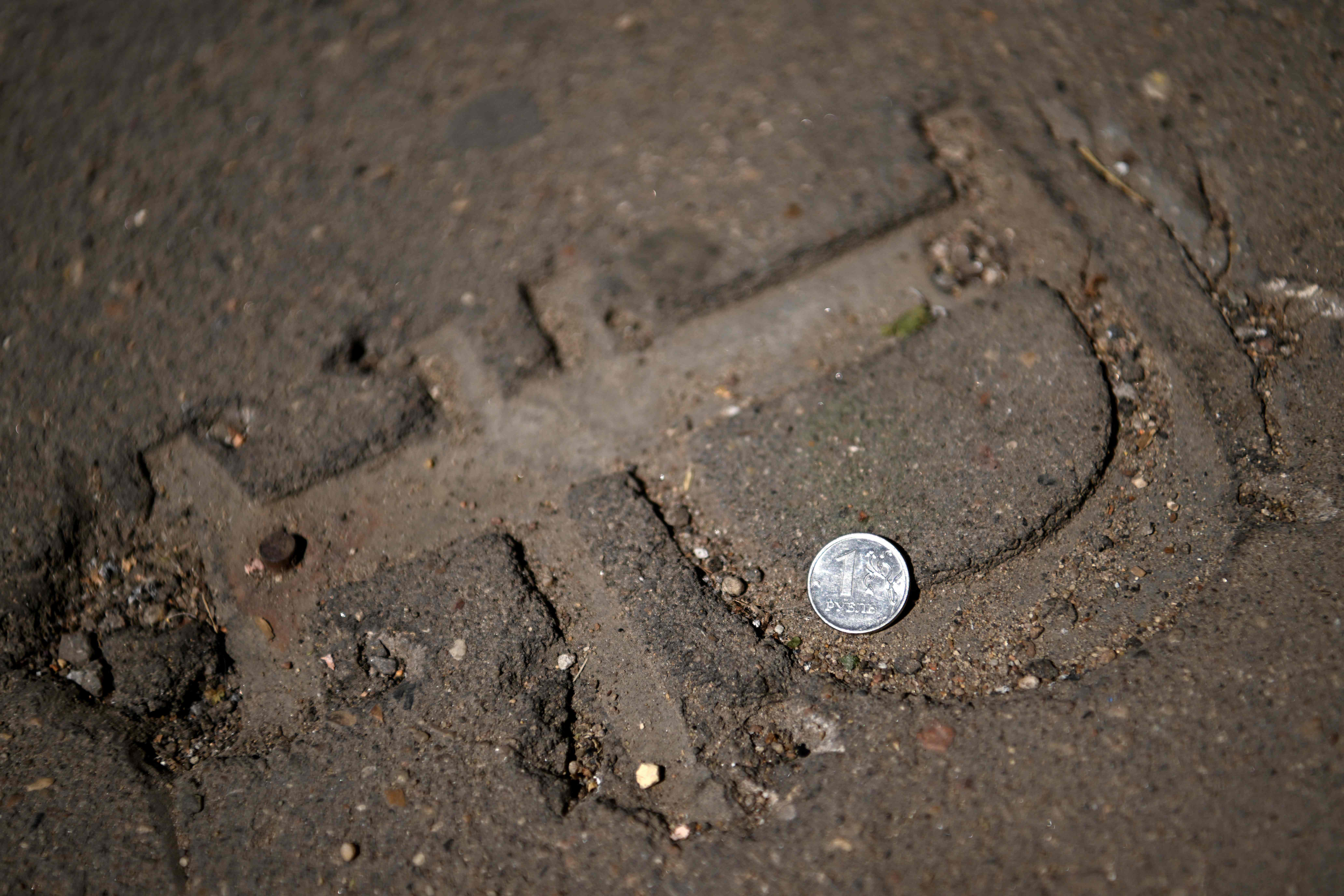Although the end of the year is still far away and many trends may still change, 2022 has undoubtedly been quite unique for the Russian economy. In terms of the depth of the economic downturn, it is certainly going to ‘outdo’ the crisis year of 2009, when the Russian Federation’s GDP shrank by 7.9%. When it comes to de‑globalisation, it will surpass all parameters of 2014−2015, when Russia was first subjected to Western sanctions following the occupation of Crimea and efforts to provoke separatism in the eastern regions of Ukraine. That said, the current crisis differs significantly from the previous ones in terms of its dynamics: unlike in the past, there has been no sharp depreciation of the rouble (this year, its value was restored, which was not the case previously); the stock market decline has also been much less significant (going down by one third now versus shrinking twice in 2014−2015 and almost five times in 2008−2009). But the most paradoxical factor in my view is the situation in foreign trade and the balance of payments.
As we know, after the start of the war in Ukraine, the Russian authorities rushed to classify the country’s foreign trade statistics. This effort, of course, looks rather ridiculous since statistical agencies of partner countries continue to publish their figures (although, to be fair, we should admit that Russian data differed from partner data in most cases, sometimes quite significantly). Anyway, the data from foreign statistical agencies as well as indirect information from Russia (such as the publication of the main balance of payments parameters for the first half of the year) indicate that the situation in foreign trade has been unique this year (and this will not change until the end of the year).
Generally speaking, two factors come into play: the usual and the unexpected. The usual factor is the decline in imports (it represented 37.3% in 2009 and 36.1% in 2015), traditionally caused by decreasing effective demand from end consumers. During the first half of 2022, this indicator decreased by 6.55% (and by 22.4% in the second quarter), and no recovery is expected in the near future. In contrast with previous crises, the decline in imports is now caused not only by falling demand, but also by restrictions imposed on certain goods and, in addition, the termination of imports of components and equipment, previously received via ‘intra-company trade’ (for example, supplies of components for the assembly of cars, machine tools or household appliances). By the end of the year, imports could shrink by 25%, although even then they would not approach the levels recorded during the two preceding recessions (which only means that the sanctions have less impact on import levels than the rouble exchange rate).
What turned out to be the unexpected factor was the situation in export deliveries. In fact, all of them, apart from oil shipments, have been declining significantly in volume (between January and July, gas exports fell by 36%, steel and fertilisers shrank by almost a third, coal by 29% and wheat by 27%). In contrast, oil was being sent to Europe in ever larger quantities (influenced by expectations of an embargo on Russian supplies expected from early December on, and unthinkably high gas prices, which made oil purchases attractive at almost any price). As a result, oil exports from Russia to Europe have recently reached new highs, at 3.41 million barrels/day, and the discount at which it was traded has almost halved, i.e. from USD 34.4 to 18.7 per barrel, which means that revenues from aggregate oil exports in the 2nd quarter increased by 20−35% compared to the same period last year, while gas exports were at least four times as high. As a consequence, according to the Bank of Russia, the trade surplus for goods and services in Russia reached a historic high between January till July, rising from USD 75.7bn to 192.4bn, or 2.54 times. The government and the Bank of Russia commented that this confirmed Russia’s immunity to sanctions, but I would not venture to say that a foreign trade surplus—which occurred many times in the past—can be seen as a guarantee of the country’s economic well-being.
The two main differences between the crisis that began in 2022 and the previous ones include a change in the budgetary situation and the standing of the real economy. Previously, with oil prices above or around USD 100/barrel, the Russian federal budget was never in deficit. However, in 2022, when global oil prices were close to historic highs and gas prices were setting new records almost every month, it will not be possible to reconcile the budget with the surplus. In July, the budget deficit totalled 892 billion roubles and, in all likelihood, the surplus experienced in the first six months of the year will hardly be seen by mid-September. The current spending on the war in Ukraine will clearly not be reduced, and the need to replenish stocks of lost equipment and expended weapons will call for an increase in allocations to the military industrial complex (not to mention the need for huge spending to reconstruct the occupied territories and ensure supplies for the new ‘Russian citizens’). The combination of a high foreign trade surplus (more than USD 60bn per quarter of a year) and a chronic deficit in the federal budget is unique in the history of modern Russia. As such, it will presumably become the ‘new normal’ for at least the next year or two.
The situation in the real economy also looks rather peculiar. In contrast with the crises of 2008−2009 and 2014−2015, the current situation has mostly impacted specific sectors whose problems will be concealed by the authorities behind general macroeconomic statistics. The decline will not be too severe for almost all consumer-oriented industries and services, and citizens’ disposable income will not shrink as sharply as the GDP or the industrial production index. The most difficult situation will be seen in equipment manufacturing, car manufacturing, transport engineering, oil and gas, coal mining, timber processing and freight transport. The degradation of these sectors will largely be masked by good foreign trade performance and high export inflows into the federal budget, which will continue to finance social spending and subsidies to the regions.
We must also look at the period which ensued after the initial impact of the crisis. In the previous crisis situations, exports (primarily of Russia’s traditional commodities) were among the main drivers of recovery and growth because the rising commodity prices with a relatively ‘even’ scale of supplies to the global markets proved to be the most important source of rising revenues for the country’s budget and the corporate sector alike. However, such a course of events is unlikely in the current situation: on the one hand, the global economy is slowing down (also due to the war unleashed by Vladimir Putin), and as it cools off, prices for most resources supplied by Russia will go down rather than up (contrary to what happened in 2010−2011 or 2016−2017). On the other hand, even the approved plan to extend sanctions against Russia (with unplanned sanctions potentially being added to the bunch) will force Russian suppliers out of their traditional European market, which will further knock export volumes and reorient export towards markets with lower margins (in fact, Russian oil has already been delivered to India at a 30% discount, and discount rates are certainly there to stay). Thus, one should not hope that—as was the case after 2009 and 2014—the Russian economy will emerge from the current crisis thanks to a new ‘export wave’.
Another important circumstance that should be taken into account is the inevitable restructuring of Russian imports. Today, it is clear that import substitution, which would enable the economy to achieve a substantial level of self-sufficiency (rather than simply providing a high share of value added locally while remaining dependent on critical components), cannot be achieved. This means that the government will have to rely on the so-called ‘parallel import’, which implies more complicated logistics routes and a whole chain of intermediaries. This will significantly drive prices of the supplies versus the pre-crisis levels (the price increases will average about 20−25%, also because many goods cannot be purchased from the manufacturers in bulk quantities). As a result, the record foreign trade surplus achieved in the summer of 2022 may shrink radically already by the end of 2023, as all of the discussed export restrictions come into force, ‘parallel import’ expands, and the industrial sector, which has almost stopped its imports now, faces the need to renew equipment.
By regulating the foreign exchange market domestically and manipulating export prices in the main external market, i.e. Europe, the Russian authorities have managed to achieve a situation where the 2022 crisis has hardly any features that marked previous recessions. This tactic is now showing impressive outcomes, with a cheap dollar and a huge surplus. At the same time, however, this tactic is laying the groundwork for future strategic defeat because of rising prices on the domestic market (today, Lada Vesta costs 2.4 to 3 million roubles, or 40−50 thousand dollars, versus 1−1.1 million roubles, or 14−16 thousand dollars back in January) and ground being lost on foreign markets (in niche positions and price points). While revelling in the gas price in Europe, reaching USD 3,000/thousand cu m, and record-breaking successes in foreign trade, the Russian authorities and the country’s experts fail to see the emerging the combination of factors that will lead the country’s economy to a full-blown disaster as early as in 2024−2025.










